A Comprehensive Guide to Medicare Part B
Medicare stands as a pillar of healthcare support for millions of Americans, offering comprehensive coverage to ensure individuals can access the medical care they need. In this guide, we’ll delve into the specifics of Medicare Part B, shedding light on its role, coverage, costs, and how to enroll.
What is Medicare Part B?
Medicare Part B, often referred to as medical insurance, is one of the essential components of the Medicare program. Unlike Part A, which primarily covers hospital stays, Part B is designed to address outpatient services and preventive care. This includes doctor’s visits, preventive screenings, lab tests, and other medically necessary services that don’t require an overnight hospital stay.
What Does Medicare Part B Cover?
Medicare Part B encompasses a broad coverage spectrum, ensuring beneficiaries have access to a range of essential healthcare services. Some key areas of coverage include:
- Doctor’s visits and consultations.
- Preventive services such as vaccinations and screenings.
- Outpatient care, including diagnostic tests and lab services.
- Durable medical equipment like wheelchairs or oxygen equipment.
- Home healthcare services under specific conditions.
Understanding the scope of coverage empowers beneficiaries to make informed decisions about their healthcare needs and take advantage of preventive services that can detect and address health issues early on.
How Much Does Medicare Part B Cost?
While Medicare Part A is often premium-free for eligible individuals, Part B comes with associated costs. Beneficiaries pay a monthly premium, an annual deductible, and coinsurance for certain services. The standard premium amount may vary each year, and individuals with higher incomes may incur an income-related monthly adjustment amount (IRMAA).
It’s essential for individuals to factor in these costs when planning for their healthcare needs. Additionally, understanding the IRMAA ensures that higher-income beneficiaries are aware of potential adjustments to their premiums.
Medicare Part B and Home Health Care
Medicare Part B plays a pivotal role in ensuring comprehensive healthcare coverage, extending its reach to include essential home health care services. Under Part B, beneficiaries are entitled to various home health services, such as skilled nursing care, physical therapy, occupational therapy, and certain home health aide services, provided they meet specific criteria. This coverage allows individuals to receive necessary medical care within the comfort of their homes, promoting independence and recovery. Home health services under Medicare Part B become particularly valuable for those who have difficulty leaving their homes or require ongoing medical attention. By encompassing home health care within its coverage, Medicare Part B underscores its commitment to delivering accessible and patient-centric healthcare solutions.
How to Apply for Medicare Part B
Enrolling in Medicare Part B requires the following eligibility: individuals must be 65 or older, a U.S. citizen or legal resident, and already enrolled in Medicare Part A. The application process involves:
- Automatic Enrollment: If you’re receiving Social Security benefits, you’ll be automatically enrolled in Medicare Part B. However, if you’re not receiving benefits, you must sign up during the Initial Enrollment Period.
- Manual Enrollment: If you’re not automatically enrolled, you can manually apply for Medicare Part B by contacting the Social Security Administration. This can be done online, by phone, or by visiting a local Social Security office.
How to Sign Up for Medicare Part B
Understanding the enrollment timelines is critical to avoid potential penalties or coverage gaps. The key points to remember include:
- Initial Enrollment Period (IEP): Beneficiaries have a seven-month window to enroll, starting three months before turning 65, including the birthday month and three months after.
- Special Enrollment Period (SEP): If you miss your IEP, you can enroll during a SEP triggered by certain life events, such as retiring or losing employer-sponsored coverage.
- General Enrollment Period (GEP): If you didn’t enroll during your IEP or a SEP, the GEP runs from January 1 to March 31 each year, with coverage beginning in July.
By staying informed about enrollment periods, individuals can navigate the process effectively and ensure seamless access to Medicare Part B coverage.
Conclusion
Medicare Part B plays an important role in providing comprehensive healthcare coverage beyond hospital stays. By understanding its purpose, coverage, costs, and enrollment process, beneficiaries can make informed decisions to safeguard their health and well-being. Whether you’re approaching eligibility or assisting a loved one through the process, this article serves as a valuable resource for Medicare Part B guidance. If you require assistance, contact our affiliate, Health Care Connectors, or reach out to other knowledgeable Medicare counselors who can guide you through the process. For a free consultation or to learn more about our home health services, contact Health Care Connectors today.



